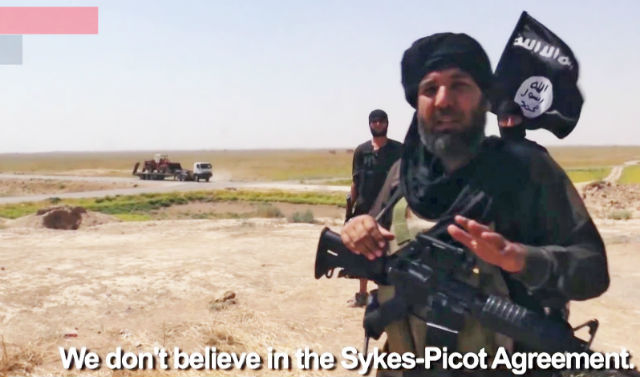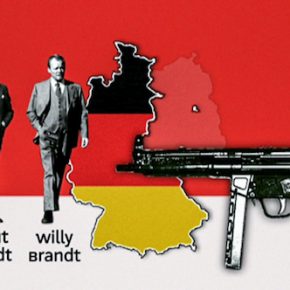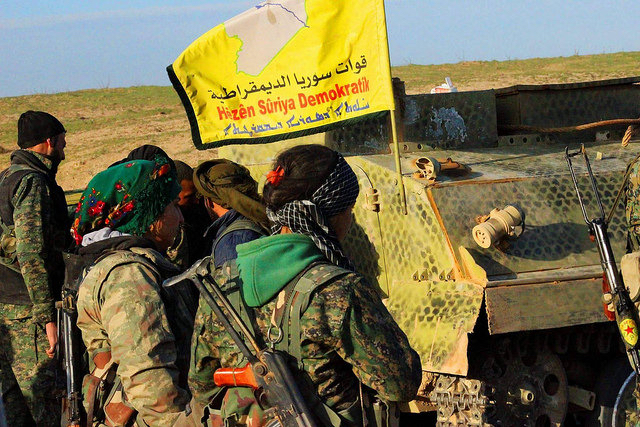As ISIS comes under increased attack in some of the region’s most fertile lands, Middle East agriculture researcher Eckart Woertz discusses how the militant group shrewdly chose to export a renewable resource.
BEIRUT – In 1980, the late, former Syrian president Hafez al-Assad famously declared that, “To lie amidst the spikes of grain or on the threshing floor is, in my eyes, worth all the palaces in the world.” By investing heavily in agriculture (and draining his country’s precious groundwater), he succeeded in making Syria a net exporter of wheat – a rarity in a region where most countries import about 70 to 80 percent of their food. The gains from this increased wheat production reached up to $350 million a year. His son, Bashar, the current president of Syria, carried on the tradition, with somewhat less success.
But the Assads aren’t the only ones who understand the market value of wheat. When the so-called Islamic State (ISIS) made its unprecedented expansion across Iraq and Syria in the summer of 2014, most of the land it grabbed was in the northeastern Jazira region – the heart of the Fertile Crescent, historically known as the breadbasket of Rome. By 2015, according to the U.N. Food and Agriculture Organization, at least one-third of the country’s wheat production lay outside government control. (Syrian sources believe the number is much higher.) The biggest portion belonged to ISIS.
The armed group sold Syria’s wheat to Iraq, to traders in southern Turkey and even back to the government. Even Donald Trump knows that oil revenues are ISIS’ “main source of income,” as he pointed out recently. (Actually, the Pentagon stated back in February that oil wasn’t the group’s main source of revenue any more.) But analysts have suspected for a long time that the group may be getting a significant portion of its revenues from agriculture.
Until now, accurate figures were hard to come by. But this year, two academic researchers who work on food and water decided to apply techniques that are widely used in archaeology, meteorology, environmental resource management and military campaigns to map inaccessible areas. Eckart Woertz and Hadi Jaafar used geographic information system (GIS) mapping and remote sensing – data collected by satellite, in this case indices of vegetation growth – to calculate the amount of agricultural production in ISIS territory and the amount of revenue from it.
They found that while drought and conflict had had some impact on crops, agriculture in ISIS territory had remained more resilient – and lucrative – than previously thought. They estimated that ISIS made about $56 million from taxation on wheat and barley alone. The total value of the 2.45 million tons (2.22 million metric tonnes) of wheat from ISIS territory, they calculated, was roughly equal to the group’s annual oil revenue during its heyday in late 2014 and early 2015 (estimated at roughly $2 million a day). Like the Syrian government, ISIS is a net cereal exporter – and may get almost as much revenue, at least in Syria, from the spikes of grain above the ground as the black gold underneath.
Syria Deeply spoke with Woertz, a senior research fellow at the Barcelona Centre for International Affairs, about his and Jaafar’s investigation into ISIS’ wheat revenue, and what it might mean for Syria’s agricultural sector.
Syria Deeply: What sparked this idea?
Eckart Woertz: The idea was simply to take a look at agriculture as a funding source of ISIS. Immediately after the ISIS takeover in summer 2014, I wrote a research note, “How Long Will ISIS Last Economically?” Later on, I bumped into Hadi [Jaafar]; I really liked his work on the Orontes Valley. I thought it would be interesting to see what’s going on in ISIS territory, because you hear a lot that they use water as a weapon, and that dams were important for them. But essentially nobody can travel there.
Oil income has been important, and still is to a certain extent. But first of all, it has suffered dramatically; and secondly, it was never that big as has been sometimes portrayed in the media. Syrian oil production was never large by the region’s standards. It’s a low-quality oil, so it takes considerable know-how to maintain production.
While we do not want to deny the importance of other sources, it is a simple fact that ISIS has accidentally, or intentionally, occupied the former breadbaskets of [Iraq and Syria]. Agriculture is the dominant form of economic activity in this part of the two countries. A lot of the ISIS income initially relied on looting and confiscations. But you can sell a looted archaeological artifact only once. You can get ransom for a hostage only once.
Syria Deeply: Do you think it’s a possibility that ISIS occupied these territories intentionally, because of the agricultural revenue?
Woertz: It’s always speculation, but in the jihad manual “The Management of Savagery” (“Idarat al-Tawahhush”), which has a cult following among ISIS followers, agriculture plays an important role in the strategic thinking. The idea is to establish a stronghold in the countryside first, in order to, first of all, have access to agriculture and resources; but also to lure government troops out of the city, and then take over power later on.
Syria Deeply: I’m sure you saw the recent FAO figures that this year’s wheat crop was half of last year’s. Would it be accurate to say that ISIS has done a better job of maintaining agricultural production in its territory than the Syrian government overall?
Woertz: No, not necessarily. I wouldn’t put it that strongly. They wouldn’t have the means to build or maintain an advanced agricultural system. It’s not like they would have established their own seed-distribution program, or fertilizer-distribution program, as far as I can see or tell. And that’s an issue, especially seeds. Seeds usually decline in quality after three to four planting seasons. So there’s a huge issue now in Syria, that the system of seed provisioning has been disrupted.
Let’s do the math. If this thing is disrupted now for the third year, we are pretty close to a breaking point where we might see more serious issues in terms of agriculture production that are not only attributable to immediate impact of conflict – displaced farmers and so on – but also due to disruption of input supplies.
This disruption of seed provision is especially pertinent in non-government-held areas. But also within government-held areas. The whole system has collapsed. Whole agricultural supply chains have been disrupted to considerable extent. And that actually should have a high priority in any post-ISIS reconstruction stage – that people would think, “How can we reestablish some sort of functioning agricultural system?”
Syria Deeply: What do you think that’s going to take? What would be your recommendation, based on this amazing data you guys have compiled, to the international policy community?
Woertz: That’s a million-dollar question. You need to have a pretty good settlement, yeah? Any post-reconstruction, agriculture and food security need to have a really high priority. Both Iraq and Syria still have a relatively large share of rural population, among the overall population, especially in these parts of the country that have fallen to ISIS control. We really need to attribute great importance to that: rehabilitating supply chains, having good nutrition programs, school meals. That’s money well spent.
This article originally appeared on Syria Deeply, and you can find the original here. For important news about the war in Syria, you can sign up to the Syria Deeply email list. Photograph courtesy of quapan. Published under a Creative Commons license.





